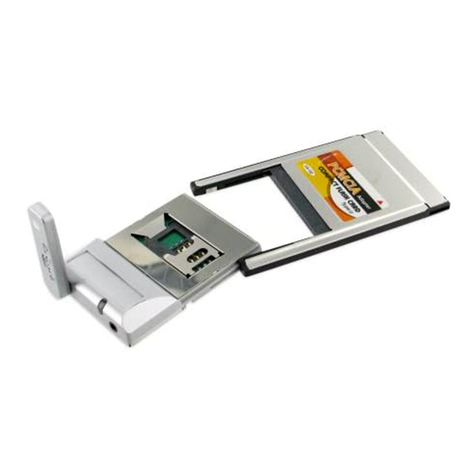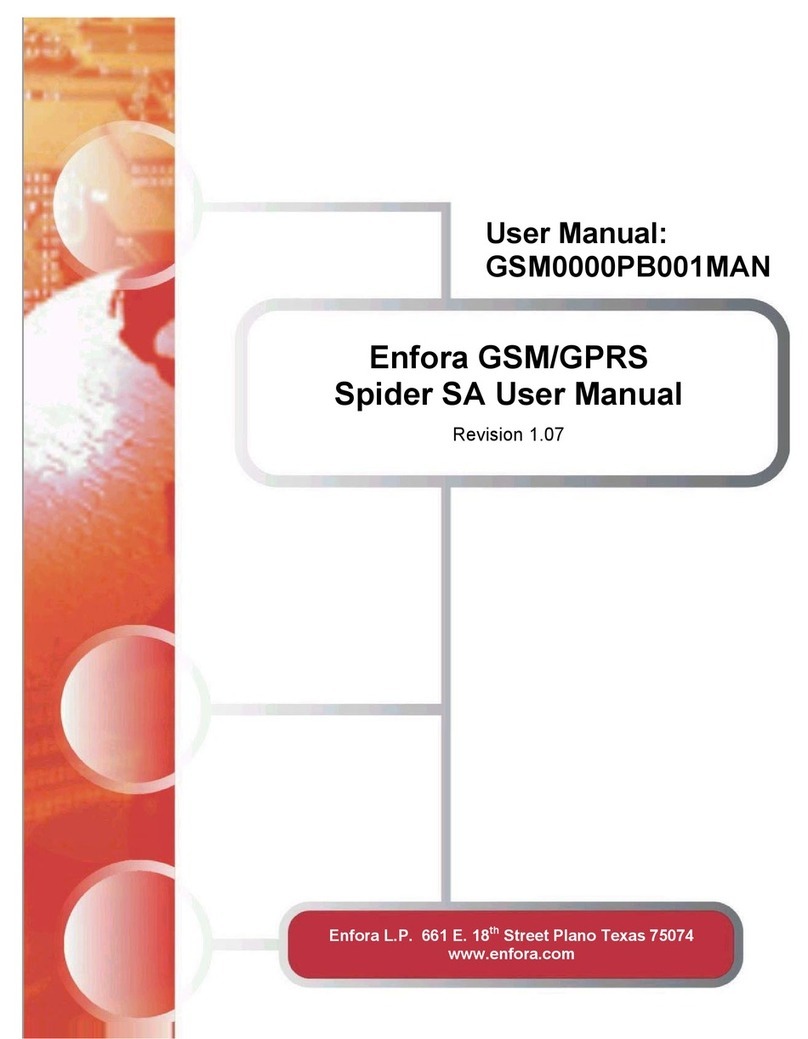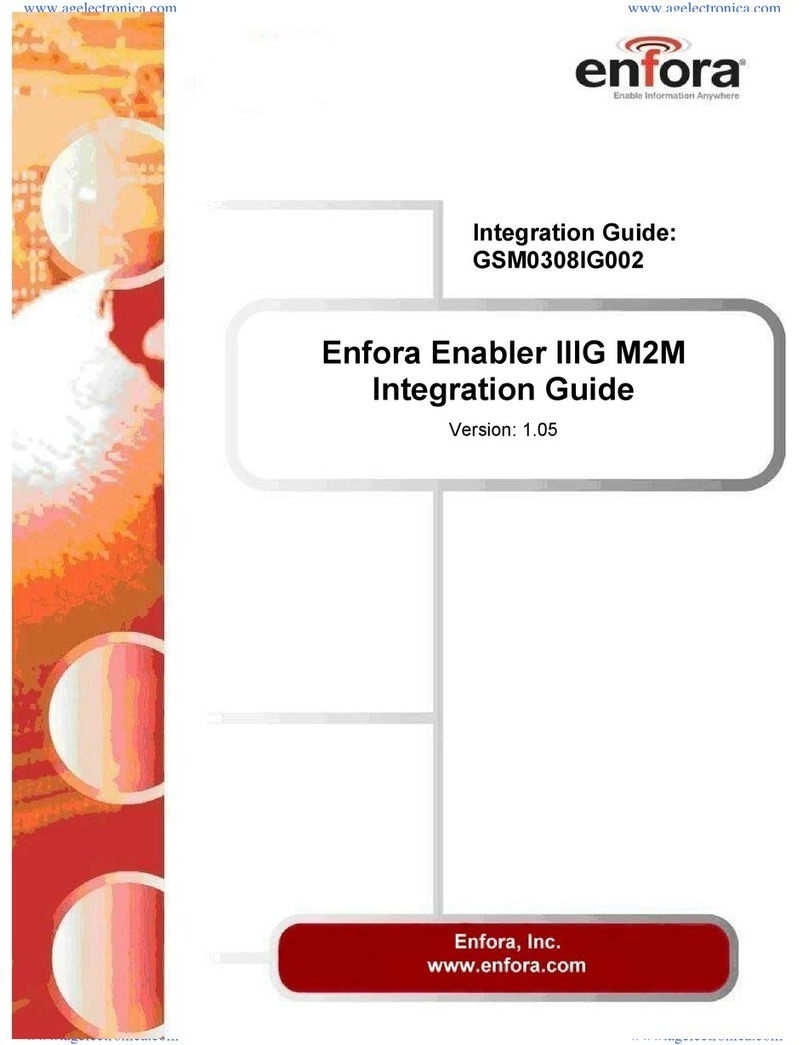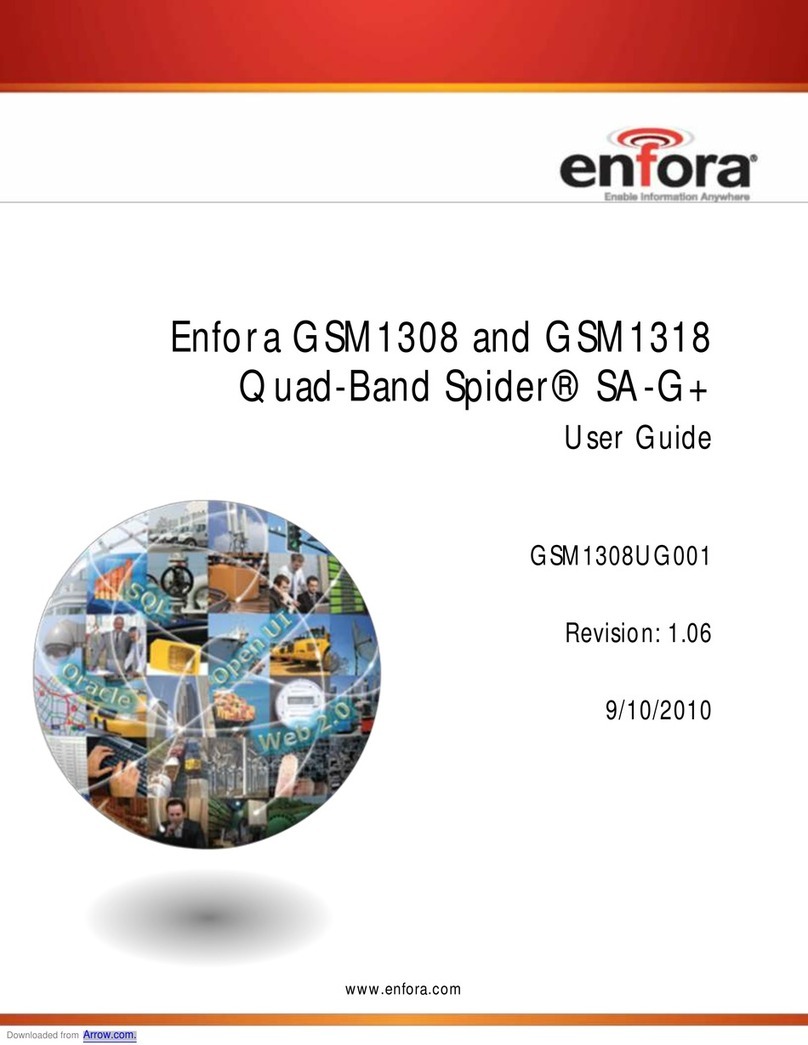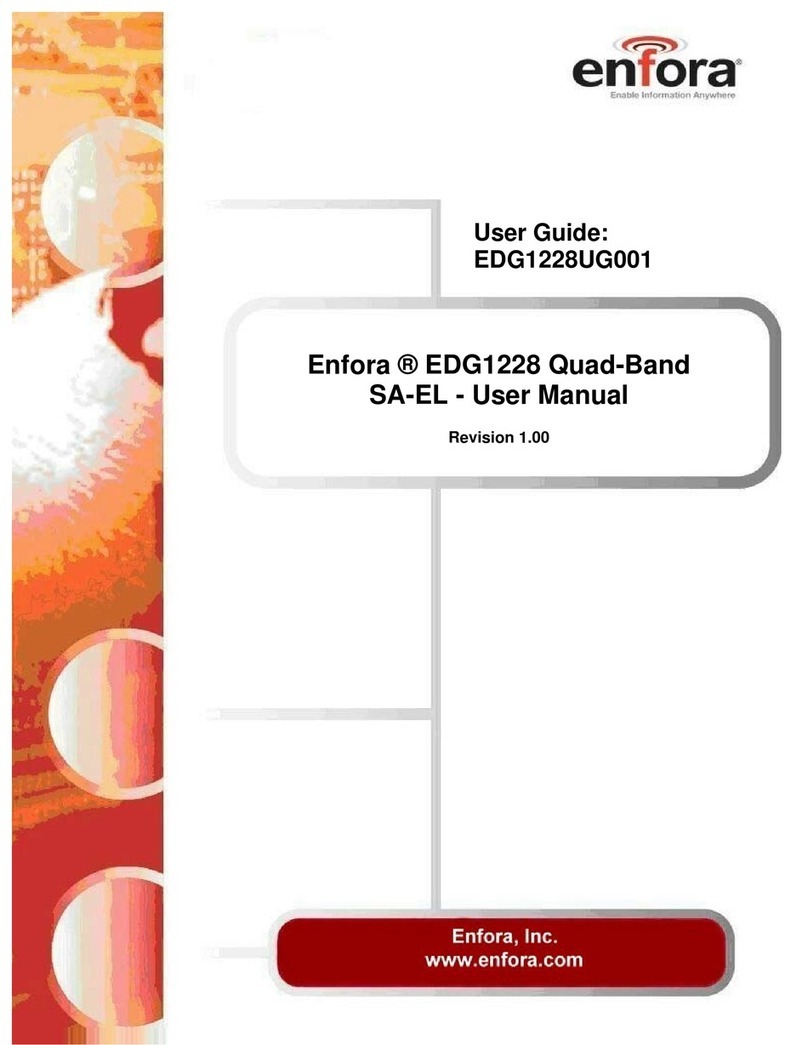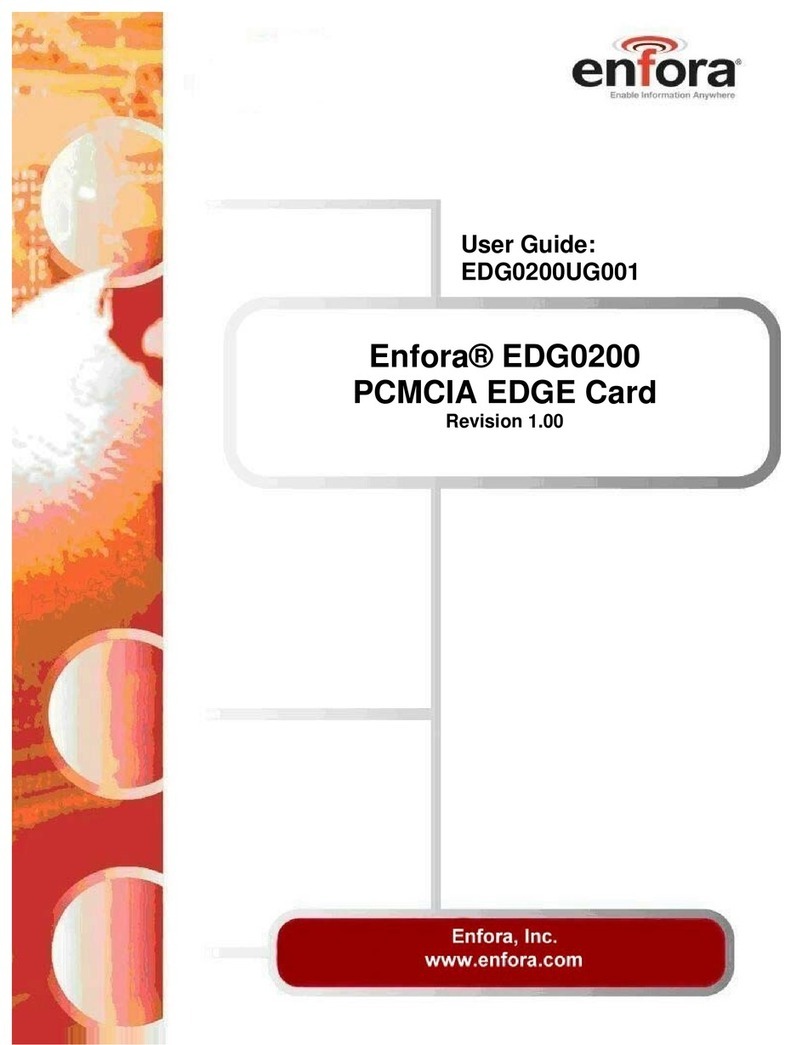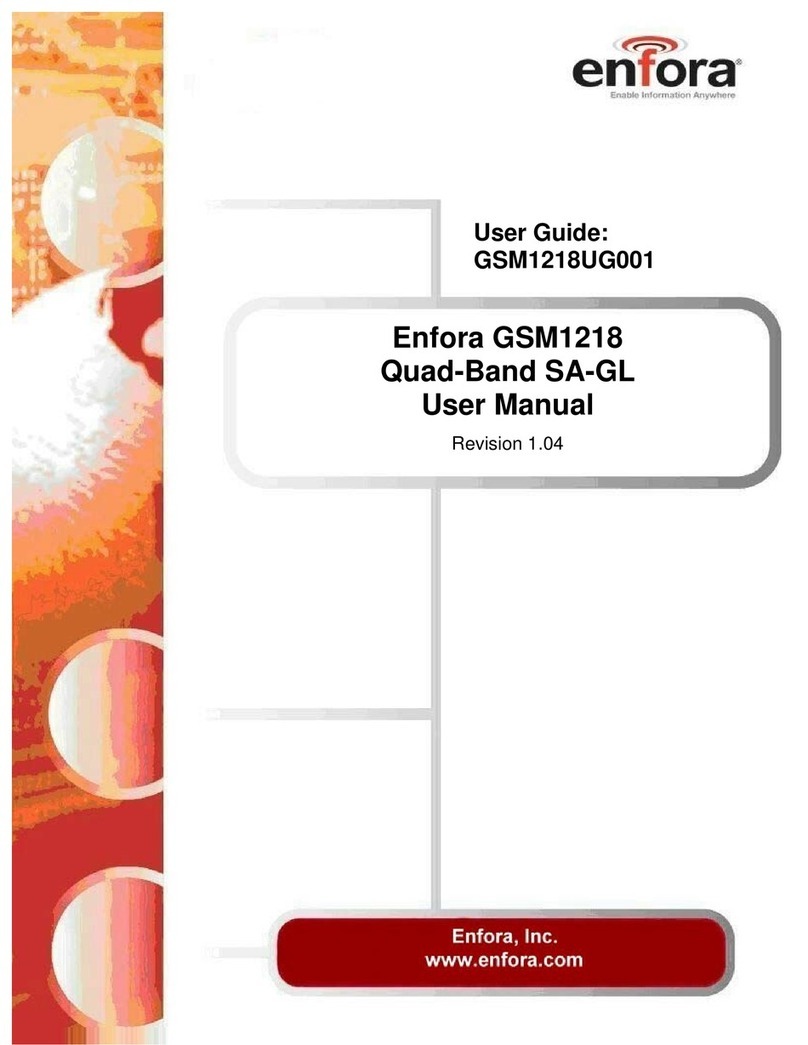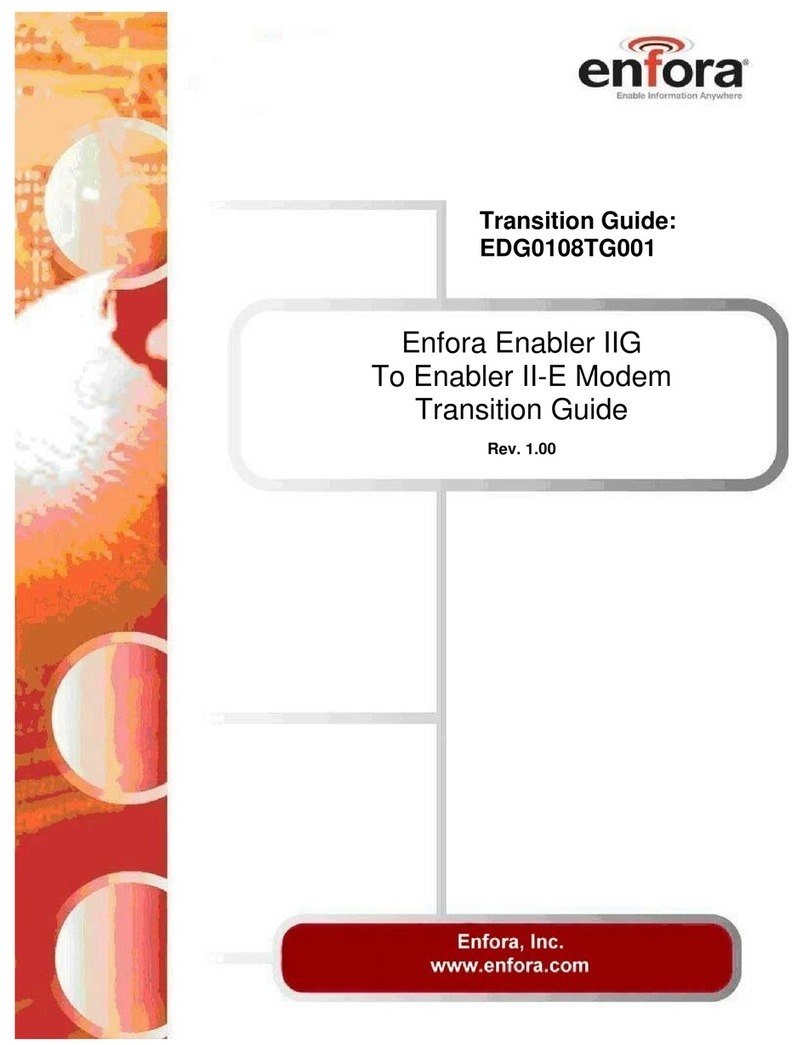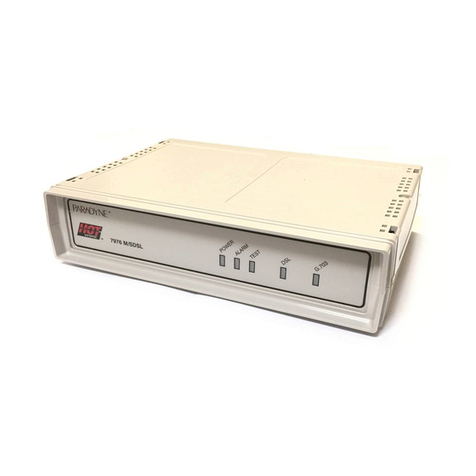
Enfora Enabler IIIE
Modem Integration Guide
EDG0308IG001 Draft –03/07/2008
6.7. CONTROL CONNECTOR SIGNAL DESCRIPTIONS AND FUNCTIONS .................................................................32
6.7.1. Module Power (Pins 85, 87, 89, 91, 93, 95, 97, 99)............................................................................32
6.7.2. Reset Signal (Pin 37) ...........................................................................................................................33
6.7.3. Power Control (Pin 35) (PWR_CTL)..................................................................................................34
6.7.3.1. Turning ON the Enabler IIIE ...........................................................................................................................34
6.7.3.2. Turning OFF the Enabler IIIE..........................................................................................................................34
6.7.3.3. Using the Power Control Signal....................................................................................................................... 35
6.7.4. Level Translation Reference Power (Pin 77).......................................................................................38
6.7.5. USB (Pins 1, 3, 5, 7, 9) ........................................................................................................................38
6.7.6. General Purpose Input/Output Interface.............................................................................................41
6.7.7. Serial Interfaces & Handshake (Pins 15, 21, 13, 11, 17, 25, 19, 23)...................................................41
6.7.8. Ring Indicate (Pin 23)..........................................................................................................................42
6.7.9. VBACKUP ...........................................................................................................................................44
6.7.10. 32 kHz output (Pin 56).........................................................................................................................45
6.7.11. Analog-To-Digital Input (Pin 74)........................................................................................................45
6.7.12. Handset Microphone Input (Pins 65, 67).............................................................................................45
6.7.13. Handset Microphone Bias Output (Pin 63) .........................................................................................46
6.7.14. Handset Speaker Output (Pins 71, 73).................................................................................................46
6.7.15. Headset Microphone Input (Pin 55) ....................................................................................................47
6.7.16. Headset Microphone Bias Output (Pin 53)..........................................................................................47
6.7.17. Headset Speaker Output Left & Right (Pins 57, 59)............................................................................48
6.7.18. Headset Output Common Mode (Pin 61).............................................................................................48
6.7.19. Headset Detect (Pin 47).......................................................................................................................49
6.8. SUBSCRIBER IDENTITY MODULE (SIM) CARRIER (PINS 76, 78, 80, 82, 84) ................................................50
6.8.1. SIM Integration for the Enfora Enabler IIIE Module..........................................................................50
6.8.2. Using a Remote SIM with the Enfora Enabler IIIE Module (Pins 76, 78, 80, 82, 84).........................50
6.8.2.1. Remote SIM Component Information.............................................................................................................. 52
7. GSM/GPRS MODES OF OPERATION.........................................................................................................53
7.1. ENABLING THE TRANSMISSION MODES FOR THE GSM/GPRS SERVICES .....................................................53
7.2. VOICE COMMUNICATION..............................................................................................................................53
7.3. CIRCUIT-SWITCHED DATA ...........................................................................................................................53
7.4. SMS: SHORT MESSAGE SERVICES................................................................................................................54
8. SIM OPERATION ............................................................................................................................................54
8.1. PROVISIONING THE SIM ...............................................................................................................................54
8.2. GSM SERVICES SUPPORTED BY THE ENFORA ENABLER IIIE MODULE ........................................................54
8.3. GPRS SERVICES SUPPORTED BY THE ENFORA ENABLER IIIE MODULE.......................................................55
8.4. SELECTING THE GSM MODES OF OPERATION..............................................................................................55
9. SOFTWARE INTERFACE..............................................................................................................................56
9.1. SOFTWARE INTERFACE.................................................................................................................................56
9.2. FORMAT FOR THE AT COMMANDS ...............................................................................................................56
9.3. ENFORA AT COMMAND SET ........................................................................................................................56
10. SETUP AND INITIALIZATION.................................................................................................................57
10.1. GENERAL SETUP.......................................................................................................................................57
10.1.1. HyperTerminal Configuration for Enabler IIIE module......................................................................57
10.1.2. Initialization (AT Command Interface)................................................................................................58
10.1.3. Initial Response to the AT Command...................................................................................................59
10.1.4. Sending an Initialization String to the Enfora Enabler IIIE Module...................................................59
10.1.5. Setting Up the Communication Mode for the Enfora Enabler IIIE Module ........................................60
10.1.6. Querying the Status of the Enfora Enabler III-G Module....................................................................60
10.1.7. Setting Module Reporting Parameters for GSM and GPRS ................................................................60
10.2. GSM/SMS EXAMPLES .............................................................................................................................61
10.2.1. Initialize the Enfora Enabler III-G Module to Send and Receive SMS Text Messages........................61



